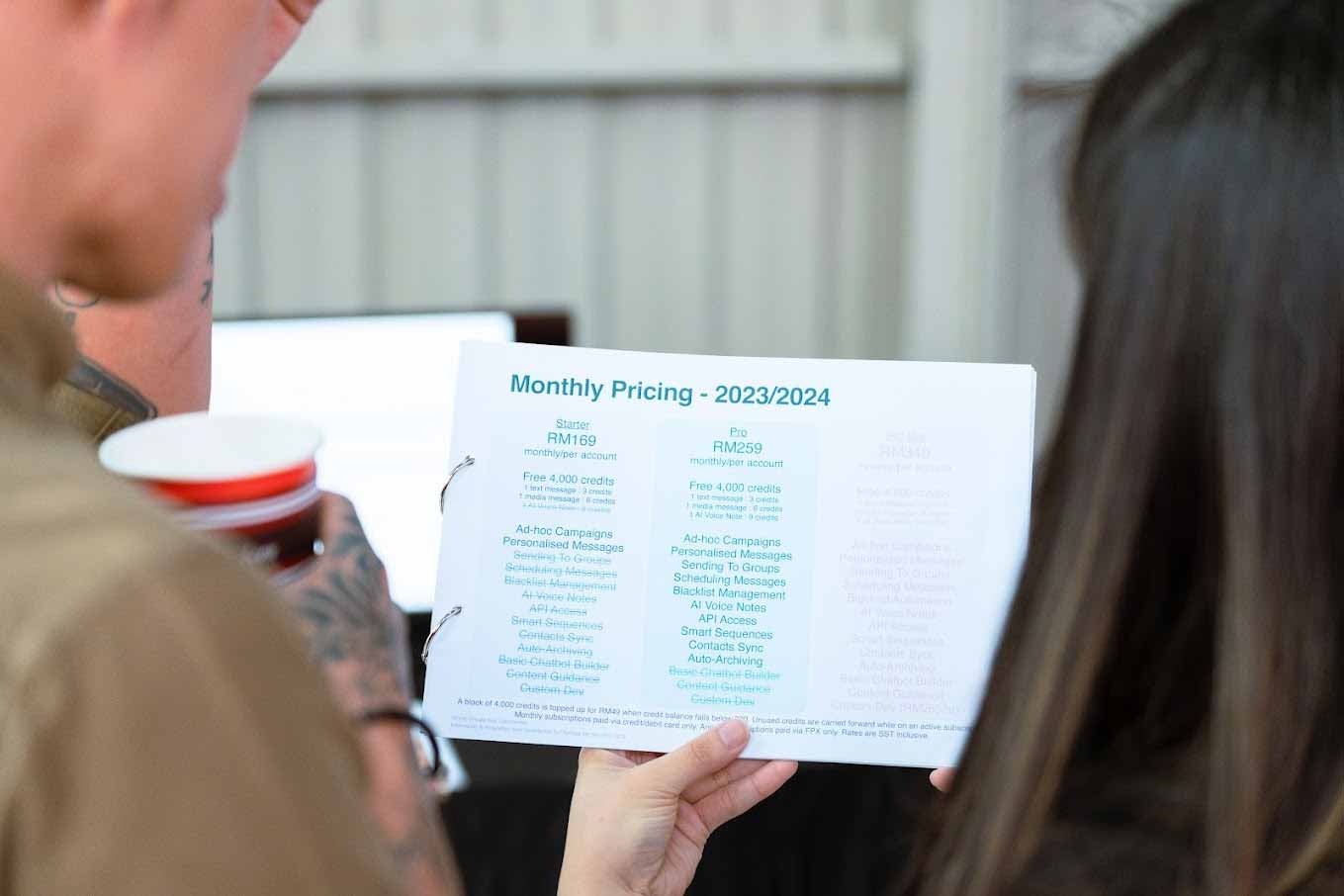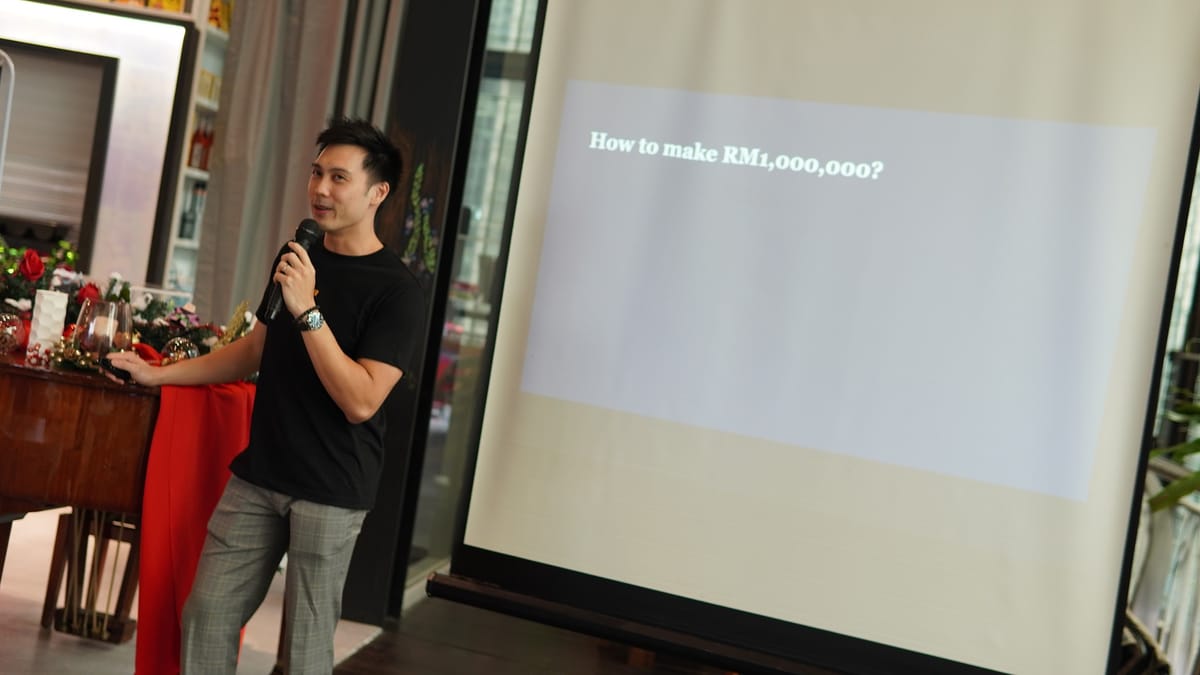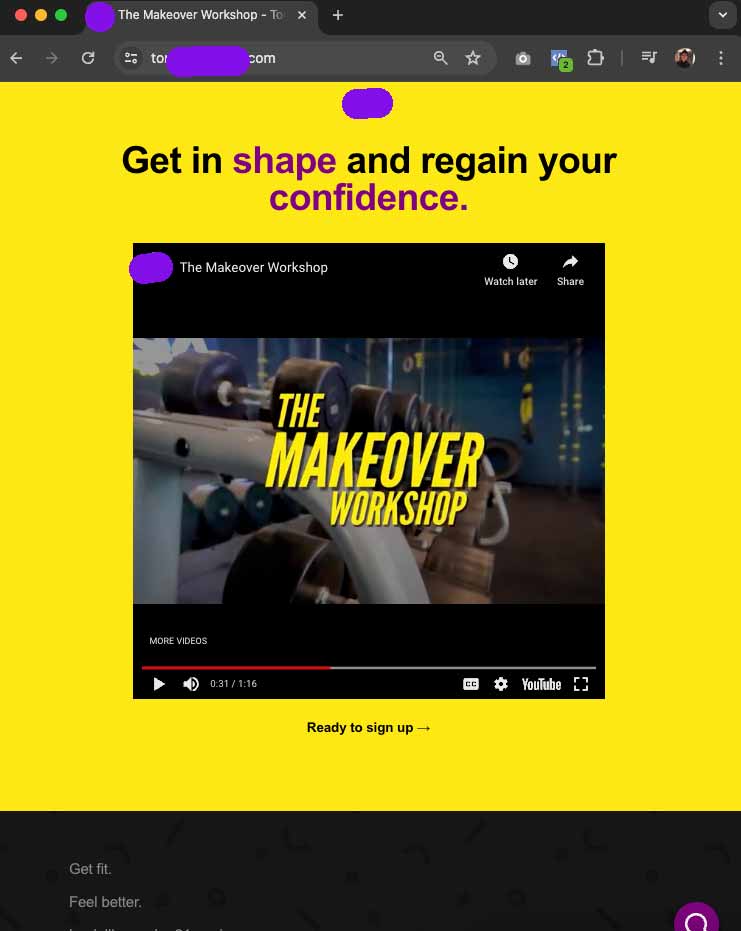Marketing Mondays: High priced vs low priced
Choosing to sell at low prices isn't always the answer.

Unpopular opinion: It's easier to sell an RM3,000 product over an RM300 product.
Before that, let's revisit the million-dollar math:

Few ways to reach 1 million dollars in annual revenue:
- One client paying you RM83,000 per month.
- 9 clients pay you RM10,000 per month
- 41 clients at RM2,000 per month
- 83 clients at RM1,000 per month
- 166 clients at RM500 per month
- 830 clients at RM100 per month
The reality is not many businesses will pay RM83,000 per month unless you go for very large companies. The RM10,000 level is possible, but I've noticed it's hard to build a business on them alone. Taking the low price and trying to sell to 830 clients is going to be hard.
And wow. Try having to convince 830 people!
41 clients at RM2,000 and 83 clients at RM1,000 per month is the easier battle to take.
Anyway, back to the main story, continuing below...
In this Marketing Mondays issue:
- Sell RM3,000, not RM300
- 3 marketing rules in E-Commerce
- A customer is not dependent on us
Easier to sell a RM3,900 product than a RM50 product
This is a true story. Earlier this year, we took on a project to help a personal fitness business market their business.
Here's the landing page:

The idea was to create a marketing funnel. Offer a weight loss "makeover" workshop to the mass audience, and convert a percentage of them into a high-ticket personal training program.
We created a beautiful landing page. Contacted partners. Value stacked the offer. Created posters. Created videos. Ran tons of ads. Mailed the entire email list. Asked for referrals.
Only to get 3 people signing up.
Btw, this isn't the first time this happened. We marketed the workshops under different names & offers – to get near similar results.
The client went back to marketing his high-ticket personal training program that cost upwards of RM3,900.
After studying, surveying customers, asking, and asking, I concluded that it's easier to sell a high-priced product vs a low-priced product.
It doesn't matter which industry you're in. Let me explain why.
People won't believe you...
You're in the fitness business. You help people lose weight. Your product is RM50.
Do you think your customers will believe you can help them get the result?
If you're the cheapest, people will have a hard time believing that you're the best.
The people you attract...
People who are willing to pay the most money are also the people who are easiest to sell to.
The kind of people we got when trying to sell the RM50 workshop, had 1,001 questions.
- What should I wear?
- Is water provided?
- How come you guys charge for this? I get free workouts at my taman.
- YouTube is free...
- Will towels be provided?
- Who is the trainer?
It was an uphill battle trying to even attract 10 paying attendees.
Compared to the RM3,900 personal training program the client was selling, most prospects came in for a fitness assessment, discussed goals, and signed up. They had a 50% conversion rate for prospects who walked into their gym for an assessment.
What gives?
A lot of time has gone into researching and designing a workshop that truly works.
Lesson: The people who are more willing to do what is necessary to help themselves are the people who are easier to sell to.
A mindset issue...
Believe it or not, it's also a mindset issue.
People who pay, pay attention.
You bet those people who paid RM3,900, made the effort to show up for their training sessions.
Compared to the RM50 workshop, we had people who asked us if we were going to run the workshop another time (because timing is bad) and even a guy who pulled out last minute & asked for a refund, because "something came up on his schedule"
That's why, ladies and gentlemen it's easier to sell a higher-priced product. The type of customers you get is also better – people willing to invest in themselves, willing to put in the work, etc. As a bonus, you're also able to deliver better results, because you charged more.
Video of the week 📹
3 rules in marketing in E-Commerce:
- Hungry crowd
- Start branding early
- Marketing is about extreme focus.
The talk starts at 8:37 in the video below:
Love those marketing nuggets? Get the rest of the recordings of other speakers during Underdog E-Commerce Con.
Our pick of the week 👌
Here's a photo I took last week, during a stay at a lodge in Johannesburg.

The bottom reads:
A customer is the most important visitor on our premises. He is not dependent on us. We are dependent on him. He is not an interruption of our work. He is the purpose of it. He is not an outsider of our business. He is part of it. We are not doing him a favour by serving him. He is doing us a favour by giving us the opportunity to do so.
I don't think Mahatma Gandhi actually said that, but it's a great quote to embody in your business.
Enjoy this newsletter? Forward to a friend or hit reply to share your thoughts. We love to hear from you.

